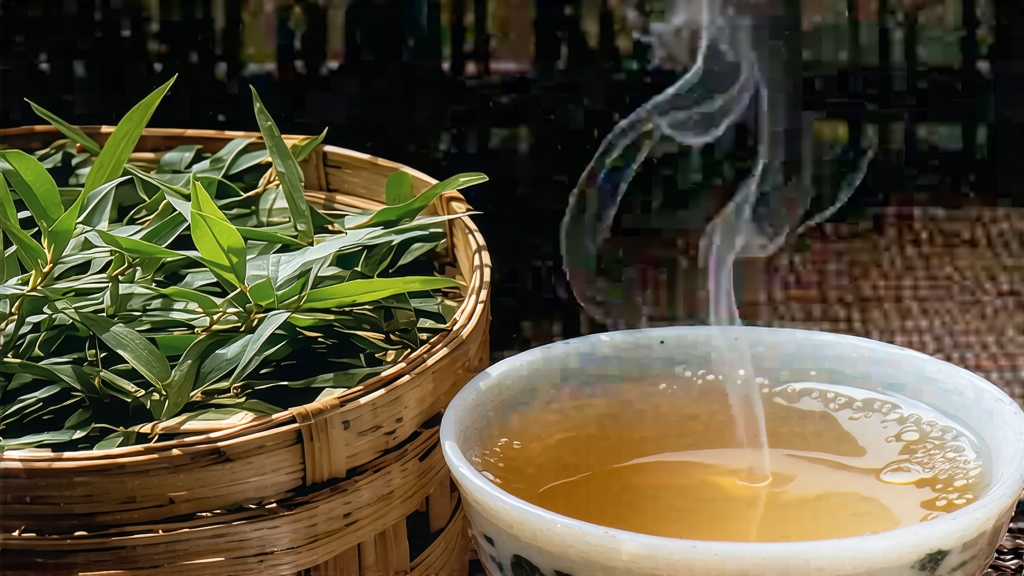
Liu Bao cha, literally “Six Forts tea,” is the southern sentinel of China’s dark tea family, a leaf that has sailed on bamboo rafts down the Xun River, stowed in the holds of clipper ships, and steeped in the cups of dockworkers from Guangzhou to Kuala Lumpur. While Pu-erh claims the western spotlight, Liu Bao quietly ferments in the humid mountain folds of Guangxi, turning time and micro-organisms into liquid history. For international drinkers who think “dark tea” begins and ends with Yunnan, Liu Bao offers a softer, sweeter rebuttal—an edible postcard from the subtropics that smells of rain-soaked betel nut and finishes like cacao nib dissolved in forest honey.
History: From Border Garrison to Maritime Silk Road
The name “Liu Bao” first appears in the 36th year of the Jiaqing reign (1795), when the Qing court listed it among the “gong cha” (tribute teas) sent from Wuzhou prefecture. The six ancient forts—Liu Bao, Zhenwu, Fosi, Xinxu, Dali, and Gonghe—ring the small basin where the tea grew, guarded once by Ming-era soldiers who traded surplus leaves for salt and iron. By the late nineteenth century, Cantonese merchants had discovered that the tea improved during the hot, weeks-long jostle downriver to Hong Kong and, eventually, to the Nanyang archipelago. Malayan tin miners prized it for dissolving the grease of coconut rice and for settling stomachs in equatorial heat; dock coolies brewed it in dented kettles, calling it “kopi-hitam Cina,” Chinese black coffee. During the 1950s–70s state-planned era, Liu Bao became one of Guangxi’s top-three export earners, shipped in 50 kg straw-lined baskets to Hong Kong trading houses such as Kam Ming and Wing Ming. Today, vintage 1970s “Zhong Cha” brand Liu Bao sells at auction for more than silver needle white tea, a testament to its slow-motion alchemy.
Micro-terroirs within Wuzhou
Wuzhou City lies where the Gui River meets the Xun, cupped by the Dayao Mountains whose red lateritic soil is laced with quartz and humus. Within a 30 km radius, three micro-zones produce recognizably different Liu Bao styles.
- Liudong Shan (East Six Mountains): 400–600 m elevation, morning fog until 10 a.m., giving leaves a jade sheen and a lighter, orchid-like sweetness after aging.
- Tashan Basin: enclosed hills trap humidity; leaves grow broader, yielding the thickest liquor and the most pronounced betel-nut note.
- Xinxu Old Grove: scattered 200-year-old seed-grown trees; farmers still practise “pai cha,” hacking the trunk lightly to reduce yield and concentrate flavour, resulting in a camphor-cool finish prized by Guangdong collectors.
Pluck standards also vary. The historic “gong xiang” grade uses one bud plus three leaves picked within the Qingming window, while the miner-destined “san ji” (third grade) allows four or five leaves and even some mature banjhi, arguing that tougher cellulose gives the microbes more to chew on during wet piling.
Craft: When Leaves Meet Humidity
Liu Bao’s processing follows the dark-tea mantra of sha-qing (kill-green) → rolling → sun-wither → wet piling → drying, yet each step carries a Guangxi accent.
Kill-green: Done in 200 cm diameter woks heated to 280 °C for three minutes, hotter and shorter than Pu-erh to lock in a subtle green-tea freshness that will later round into dried-longan sweetness.
Rolling: A 30-minute machine roll followed by 10 minutes of foot-rolling inside a bamboo cylinder—a traditional step that fractures the leaf edge just enough to encourage microbial entry.
Sun-wither: Leaves are spread on straw mats for four hours, flipped every 20 minutes so both sides inhale the mountain UV that lowers grassy volatiles.
Wet piling (wo dui): The signature move. A 100 kg batch is sprayed with 25 L of misty Xun River water, then piled 70 cm high inside a cement chamber whose walls are lined with old Liu Bao crumbs—an in